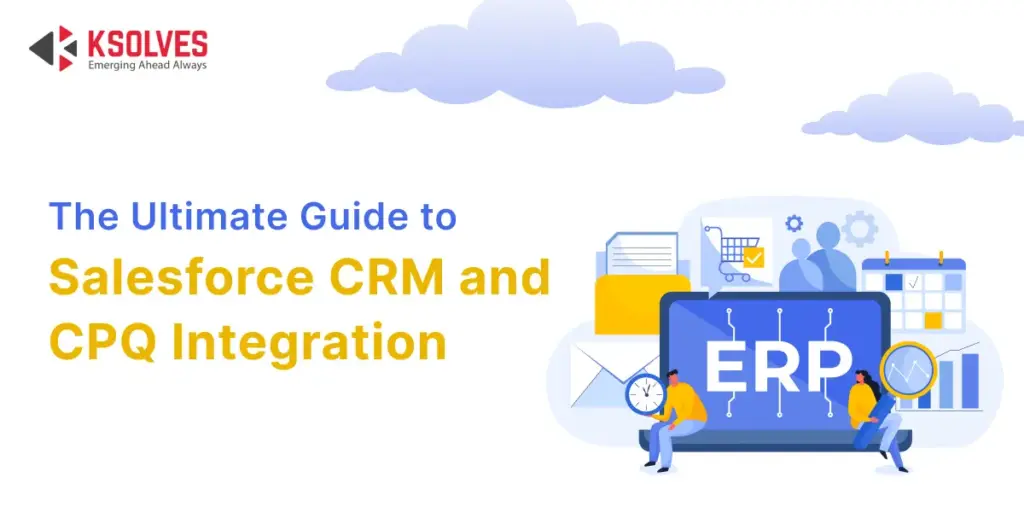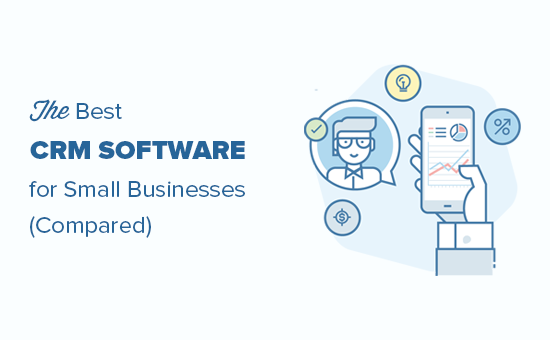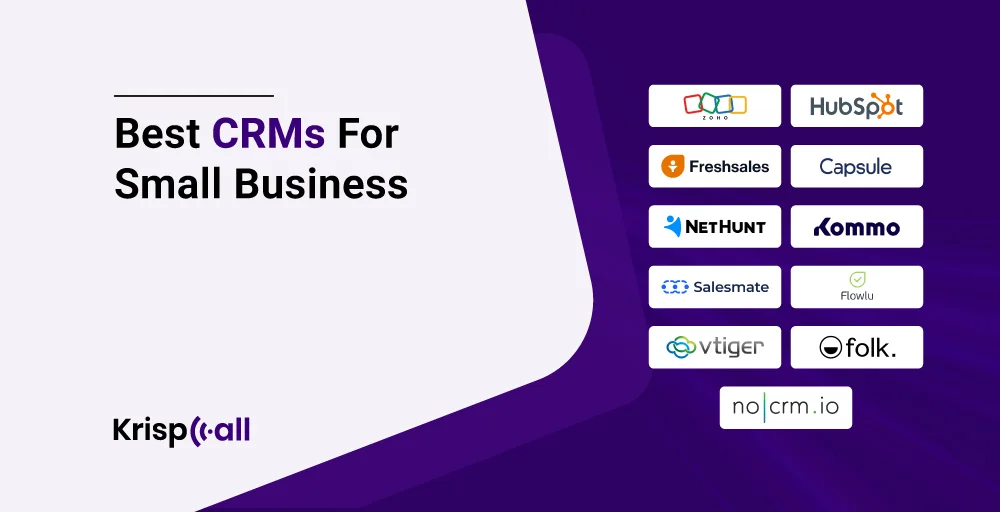
Unlocking the Power of Salesforce: Why CRM Integration Matters
In today’s fast-paced business environment, staying ahead requires more than just hard work; it demands smart strategies and efficient tools. One such tool that has become indispensable for businesses of all sizes is a Customer Relationship Management (CRM) system. And when we talk about CRM, Salesforce often takes center stage. But simply having Salesforce isn’t enough. To truly harness its potential, you need to embrace the power of CRM integration. This article will delve deep into the world of CRM integration with Salesforce, exploring its benefits, how it works, and how you can leverage it to transform your business.
Think of your business as a complex ecosystem. Different departments—sales, marketing, customer service, finance—are like different organisms, each with its own function but all interconnected. Without a central nervous system, these organisms struggle to communicate and collaborate effectively. CRM integration acts as that central nervous system, connecting all your business processes and allowing data to flow seamlessly between them. This smooth flow of information is what ultimately leads to improved efficiency, better decision-making, and, most importantly, increased revenue.
What is CRM Integration? A Simple Explanation
At its core, CRM integration is the process of connecting your CRM system, such as Salesforce, with other software applications and platforms that your business uses. These integrations allow data to be shared and synchronized between systems, eliminating data silos and providing a unified view of your customer and business operations. Imagine having all the relevant information about a customer—their purchase history, support tickets, marketing interactions, and more—available in one place. That’s the power of CRM integration.
This integration can involve various systems, including:
- Marketing Automation Platforms: Connecting Salesforce with platforms like Marketo, HubSpot, or Pardot to synchronize lead data, track campaign performance, and personalize marketing efforts.
- Accounting Software: Integrating with tools like QuickBooks or Xero to streamline financial processes, track sales revenue, and manage invoices.
- E-commerce Platforms: Linking Salesforce with platforms like Shopify or Magento to capture customer data, track online orders, and provide personalized customer experiences.
- Help Desk Software: Integrating with tools like Zendesk or Freshdesk to provide customer support agents with a complete view of customer interactions and resolve issues more efficiently.
- Communication Tools: Connecting with communication platforms like Slack or Microsoft Teams to improve collaboration and communication across teams.
The possibilities are vast, and the specific integrations you choose will depend on your business needs and goals.
The Benefits of CRM Integration with Salesforce
The advantages of integrating Salesforce with other systems are numerous and far-reaching. Here are some of the most significant benefits:
1. Enhanced Data Accuracy and Consistency
One of the biggest challenges businesses face is maintaining accurate and consistent data across different systems. CRM integration helps solve this problem by synchronizing data between systems, ensuring that everyone is working with the same information. This eliminates the risk of data entry errors, reduces the time spent on manual data entry, and improves the overall quality of your data.
2. Improved Efficiency and Productivity
By automating data transfer and eliminating the need for manual data entry, CRM integration frees up your employees to focus on more important tasks. Sales reps can spend more time selling, marketers can focus on creating engaging campaigns, and customer service agents can resolve issues faster. This increased efficiency translates to higher productivity and a better return on investment.
3. Better Customer Experiences
CRM integration allows you to create a more personalized and seamless customer experience. By having a complete view of your customers, you can tailor your interactions to their specific needs and preferences. This leads to increased customer satisfaction, loyalty, and ultimately, higher revenue.
4. Streamlined Sales Processes
Integrating Salesforce with other sales tools can streamline your sales processes and improve your sales team’s performance. For example, integrating with a lead generation tool can automatically import leads into Salesforce, while integrating with a sales automation tool can automate tasks like follow-up emails and appointment scheduling. This allows your sales team to focus on closing deals and driving revenue.
5. Data-Driven Decision Making
CRM integration provides you with a wealth of data that can be used to make more informed decisions. By analyzing data from different systems, you can gain valuable insights into your customers, your sales performance, and your marketing effectiveness. This allows you to identify areas for improvement, optimize your strategies, and drive better business outcomes.
6. Reduced Costs
While there is an initial investment in setting up CRM integrations, the long-term benefits often outweigh the costs. By automating tasks, improving efficiency, and reducing errors, CRM integration can help you reduce operational costs and improve your bottom line.
How CRM Integration with Salesforce Works: A Technical Overview
The technical aspects of CRM integration with Salesforce can vary depending on the systems you’re integrating. However, the general process involves these key steps:
1. Defining Your Integration Goals
Before you begin, it’s essential to define your integration goals. What do you want to achieve with the integration? What data needs to be synchronized? What processes do you want to automate? Clearly defining your goals will help you choose the right integration methods and ensure that your integration is successful.
2. Choosing the Right Integration Method
There are several methods for integrating Salesforce with other systems, including:
- Native Integrations: Salesforce offers native integrations with some popular applications, such as Gmail, Outlook, and Mailchimp. These integrations are typically easy to set up and require minimal technical expertise.
- AppExchange Apps: The Salesforce AppExchange offers a wide range of pre-built integrations with various applications. These apps are developed by Salesforce partners and can be installed directly into your Salesforce instance.
- API-based Integrations: Salesforce provides a robust API (Application Programming Interface) that allows you to build custom integrations with other systems. This method offers the most flexibility and control but requires technical expertise.
- Integration Platforms as a Service (iPaaS): iPaaS platforms, such as MuleSoft, Dell Boomi, and Zapier, provide a cloud-based platform for integrating various applications. These platforms offer pre-built connectors, workflow automation tools, and data mapping capabilities, making integration easier and faster.
The best method for you will depend on your technical expertise, the complexity of the integration, and the specific systems you’re integrating.
3. Configuring the Integration
Once you’ve chosen your integration method, you’ll need to configure the integration. This typically involves connecting the systems, mapping the data fields, and defining the synchronization rules. The specific steps will vary depending on the integration method you’re using.
4. Testing the Integration
Before you launch the integration, it’s crucial to test it thoroughly. This involves verifying that data is being synchronized correctly, that all the necessary fields are being mapped, and that the integration is performing as expected. Testing helps you identify and fix any issues before they impact your business.
5. Monitoring and Maintaining the Integration
Once the integration is live, you’ll need to monitor it regularly to ensure that it’s functioning properly. This involves checking for errors, monitoring data synchronization, and making any necessary adjustments. You’ll also need to update the integration as your business needs and the integrated systems evolve.
Step-by-Step Guide: Integrating Salesforce with Popular Platforms
Let’s explore some common integrations and provide a general step-by-step approach. Remember, specific steps may vary based on the platform and integration method.
1. Integrating Salesforce with Marketing Automation (e.g., Marketo, HubSpot)
This integration is crucial for aligning sales and marketing efforts.
- Choose the Integration Method: Often, these platforms offer pre-built connectors or utilize an iPaaS like Zapier or MuleSoft.
- Connect the Accounts: Authenticate your Salesforce and marketing automation accounts within the chosen platform.
- Map Data Fields: Define which fields in Salesforce map to which fields in your marketing automation platform (e.g., Lead Source, Email Address, Company Name).
- Configure Synchronization Rules: Determine how data will be synchronized (e.g., real-time, scheduled). Set up rules for lead scoring, lead assignment, and campaign tracking.
- Test and Monitor: Verify that leads and contact information are syncing correctly and that campaign data is being tracked accurately.
n
2. Integrating Salesforce with Accounting Software (e.g., QuickBooks, Xero)
Streamline your financial processes by syncing sales data.
- Choose the Integration Method: Look for AppExchange apps or utilize an iPaaS.
- Connect the Accounts: Authenticate your Salesforce and accounting software accounts.
- Map Data Fields: Map key fields like Account Name, Opportunity Amount, and Invoice Details.
- Configure Synchronization Rules: Set up rules for syncing sales data, invoices, and payments. Consider the direction of data flow (Salesforce to accounting or vice versa).
- Test and Monitor: Ensure sales data and financial information are accurately reflected in both systems.
3. Integrating Salesforce with E-commerce Platforms (e.g., Shopify, Magento)
Enhance customer experiences by connecting sales and customer data.
- Choose the Integration Method: Many platforms offer pre-built connectors or partner integrations.
- Connect the Accounts: Authenticate your Salesforce and e-commerce platform accounts.
- Map Data Fields: Map fields like Customer Information, Order Details, and Product Information.
- Configure Synchronization Rules: Set up rules for syncing customer data, order information, and product details.
- Test and Monitor: Verify that order data and customer information are accurately synced.
4. Integrating Salesforce with Help Desk Software (e.g., Zendesk, Freshdesk)
Improve customer support by linking customer information and support tickets.
- Choose the Integration Method: Explore AppExchange apps or use an iPaaS.
- Connect the Accounts: Authenticate your Salesforce and help desk software accounts.
- Map Data Fields: Map Customer Information, Support Tickets, and Case Details.
- Configure Synchronization Rules: Set up rules for syncing customer data and case information.
- Test and Monitor: Ensure customer data and support ticket details are synced.
Choosing the Right Integration Partner
While some businesses have the internal expertise to handle Salesforce integrations, others benefit from partnering with a specialized integration provider. Here’s what to look for:
- Experience: Look for a partner with a proven track record of successful Salesforce integrations.
- Expertise: Ensure the partner has experience with the specific systems you want to integrate.
- Customization Capabilities: The partner should be able to customize the integration to meet your specific needs.
- Support and Maintenance: The partner should provide ongoing support and maintenance to ensure the integration runs smoothly.
- Reviews and Testimonials: Check for client reviews and testimonials to gauge the partner’s reputation and quality of work.
Common Challenges and How to Overcome Them
While CRM integration offers significant benefits, it’s not without its challenges. Here are some common hurdles and how to address them:
1. Data Quality Issues
Poor data quality can undermine the effectiveness of your integrations. To address this, implement data cleansing processes, establish data governance policies, and regularly audit your data.
2. Complexity
Integrating multiple systems can be complex, especially if you have a complex IT infrastructure. To overcome this, start with a phased approach, focusing on the most critical integrations first. Consider using an iPaaS to simplify the integration process.
3. Security Concerns
Data security is paramount. Ensure that your integrations comply with all relevant security standards and regulations. Use secure authentication methods and encrypt data in transit and at rest.
4. Lack of User Adoption
If your employees don’t embrace the new integrated systems, the integration will fail. To promote user adoption, provide adequate training, clearly communicate the benefits of the integration, and involve users in the implementation process.
5. Budgetary Constraints
CRM integrations can be expensive. Plan your budget carefully, prioritize your integrations, and look for cost-effective solutions, such as using pre-built connectors or opting for cloud-based integration platforms.
The Future of CRM Integration with Salesforce
The landscape of CRM integration is constantly evolving, with new technologies and trends emerging. Here are some of the key developments to watch for:
- Artificial Intelligence (AI): AI is being used to automate integration tasks, improve data quality, and provide more intelligent insights.
- Machine Learning (ML): ML is being used to predict customer behavior, personalize customer experiences, and optimize sales processes.
- Low-Code/No-Code Integration Platforms: These platforms are making it easier for businesses to build and manage their integrations without requiring extensive coding skills.
- Increased Focus on Data Privacy and Security: As data privacy regulations become more stringent, businesses are placing a greater emphasis on data security and compliance.
- Integration with Emerging Technologies: CRM integration is expanding to encompass emerging technologies, such as IoT, blockchain, and augmented reality.
As these technologies continue to evolve, CRM integration will become even more powerful and essential for businesses that want to stay competitive.
Conclusion: Embrace Integration to Drive Business Success
CRM integration with Salesforce is no longer a luxury; it’s a necessity for businesses that want to thrive in today’s competitive landscape. By connecting your CRM system with other applications, you can unlock a wealth of benefits, including enhanced data accuracy, improved efficiency, better customer experiences, and data-driven decision-making. While there may be challenges along the way, the rewards of successful CRM integration are well worth the effort. By embracing integration, you can supercharge your business, drive growth, and achieve lasting success. Start planning your Salesforce integrations today and experience the transformative power of a connected business.


